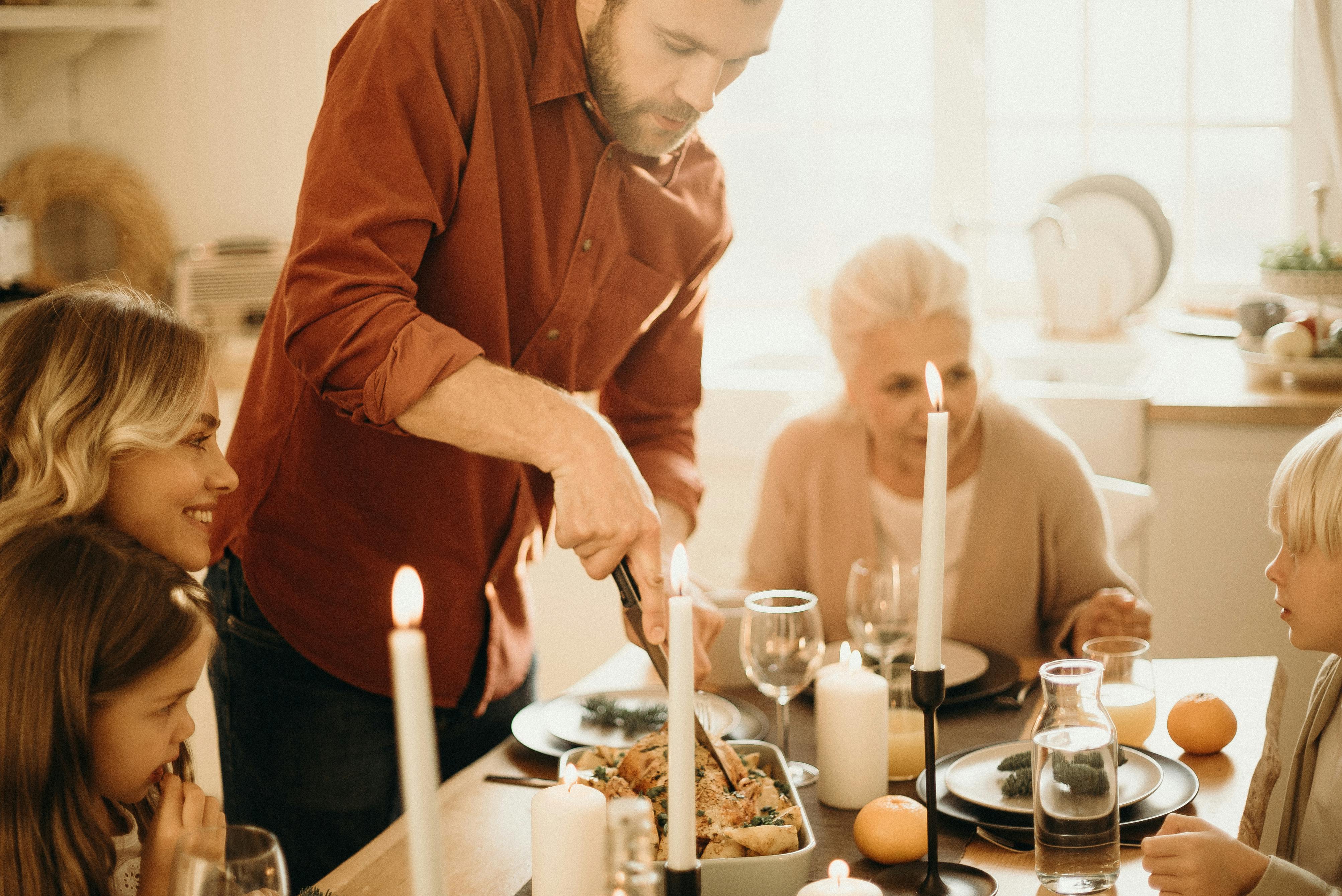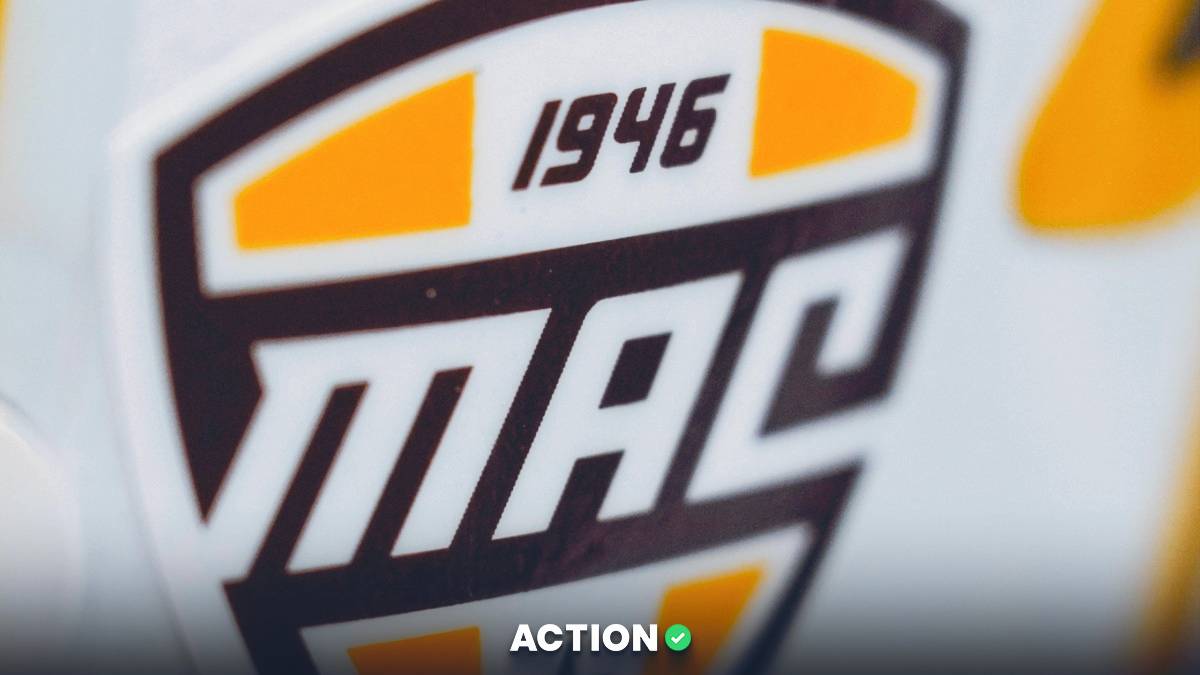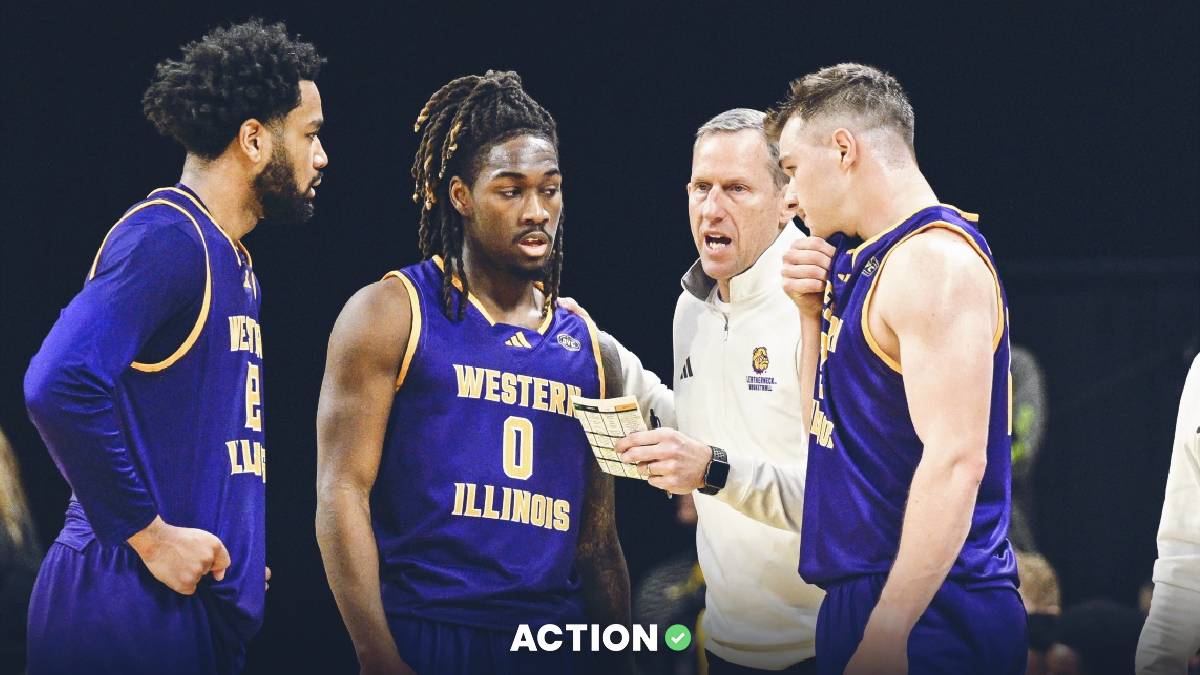The Odds of Surviving Thanksgiving
Thanksgiving is America’s endurance test. One long meal where politics, personalities, and pie share the same table. Some states glide through; others are a glass of wine from a fourth-quarter collapse.
To put numbers on it, Action Network built the Thanksgiving Survival Index 2025, a state-by-state model using nine indicators: political division, alcohol consumption, stress and destress habits, divorce rates, family-argument and therapy signals, plus football rivalries and team density.
For each state, the index estimates a survival probability, meaning the chance a typical family gets through dinner without a major blowup. We show it as a percentage and as implied moneyline odds (for example, 88.6% ≈ -777).
These are model estimates, not guarantees. Every family is different, and the patterns are real.
Key Findings
- California ranks last at about 47.6% (+110), the lowest survival odds in the country.
- West Virginia ranks first at about 88.6% (-777), the strongest odds of a drama-free dinner.
- Razor-thin party splits, like Wisconsin’s 0.9-point gap and Pennsylvania’s 1.8-point gap, push states into the high-risk group.
- Higher alcohol consumption paired with weak destress habits shows up again and again in lower survival odds.
- Football-heavy, rivalry-rich states (Texas, Florida, Ohio, California) spike on the Feud Index when the games kick off.
10 States Least Likely to Survive Thanksgiving
These are the states with the lowest implied odds of a peaceful Thanksgiving. Survival probabilities range from about 47% to just over 53%, basically coin-flip territory.

1. California
Looks perfect on paper: big table, bigger personalities, three kinds of stuffing. In practice, you seat tech, entertainment, agriculture, and activism at the same end and hope the Wi-Fi holds. High alcohol consumption plus one of the strongest rivalry footprints sits on top of a clear partisan lean and elevated family tension.
Estimated survival: 47.6% (+110).
2. New Mexico
Feels like a family summit, long tables, long memories, debates that go back decades. Tight-knit culture, tight opinions. The data shows an almost even political balance and elevated family-argument searches, while destress behavior is near the bottom of the index.
Estimated survival: 47.9% (+109).
3. Nevada
Where the holiday shift meets the graveyard shift. When the local economy runs at night, “just one drink” can mean something else by dessert. Among the highest per-capita alcohol marks, a near-even partisan profile, and signs of family strain.
Estimated survival: 48.3% (+107).
4. Pennsylvania
Part family reunion, part election recap. Eagles fans, Steelers fans, and a 50/50 political map, usually in one living room. One of the tightest party splits plus strong rivalry and team-density scores keeps emotions hot.
Estimated survival: 48.8% (+105).
5. Florida
Snowbirds, college kids, retirees, new arrivals. “Keep it light” usually lasts through the first round of drinks. Double-digit partisan gap, above-average alcohol use, higher argument activity, and a maxed rivalry profile.
Estimated survival: 49.1% (+104).
6. Texas
A full-contact holiday: brisket vs. turkey, Longhorns vs. Aggies, and an uncle who treats grace like opening statements. Heavy rivalry density, high family-argument scores, and a noticeable partisan lean give every topic an edge.
Estimated survival: 49.3% (+103).
7. New Jersey
Nobody keeps thoughts to themselves. Arguments are loud, jokes louder, and nobody leaves confused. Intensity plus density: close quarters, a modest political split, highly engaged households.
Estimated survival: 51.5% (-106).
8. North Carolina
Old South, new South, college hoops country. Small talk can turn into “actually…” on the walk back from the kitchen. Near-even party balance with elevated divorce and argument signals; squarely high-feud.
Estimated survival: 52.5% (-111).
9. Arizona
A holiday of fresh starts, new jobs, new neighborhoods, new politics in one driveway. Stakes feel higher when half the table met in the last five years. Moderate alcohol use, a modest partisan gap, and elevated argument indicators keep tension simmering.
Estimated survival: 53.0% (-113).
10. Wisconsin
Classic Midwestern warmth on the surface. Underneath, half the room watches the Packers, the other half loudly doesn't. The tightest party split in the dataset plus higher alcohol consumption and passionate fandom make close games feel closer.
Estimated survival: 53.1% (-113).
Top 10 States Most Likely to Survive Thanksgiving
At the calmer end of the table (pun intended), Thanksgiving looks more like ritual than risk. Survival probabilities run from about 76% up to nearly 89%, almost double the odds of the riskiest states.
1. West Virginia
No rewrite needed. Same dishes, same seats, predictable conversations. Landslide political lean, low alcohol consumption, modest argument scores.
Estimated survival: 88.6% (-777).
2. Wyoming
Quiet roads, quiet towns, quiet tables. If someone needs space, there is plenty of it. One of the largest partisan margins plus very low reported conflict keeps the Feud Index down, even with moderate drinking.
Estimated survival: 87.2% (-681).
3. Idaho
Routine rules: church, potatoes, football, bed. Most people know where everyone stands and agree not to make it the headline. Strong ideological alignment, low alcohol use, modest argument signals.
Estimated survival: 85.2% (-576).
4. Vermont
More likely to debate maple syrup or skiing than national politics at full volume. Disagreements stay at room temperature. Clear partisan lean, low divorce rates, essentially no recorded argument signal, even with relatively higher drinking.
Estimated survival: 84.0% (-525).
5. North Dakota
Energy is for the weather, not shouting over stuffing. Mirrors Idaho’s consensus and posts some of the lowest argument scores in the dataset.
Estimated survival: 83.9% (-521).
6. South Dakota
Smaller guest lists, earlier dinners, fewer flare-ups. Wide partisan margin and modest alcohol use help offset higher argument markers, keeping feud risk moderate.
Estimated survival: 81.8% (-449).
7. Hawaii
Debate is turkey, plate lunch, or both. I mean, storming out loses steam when the beach is right there. Low recorded family-argument levels and a clear political lean point to quick cooldowns.
Estimated survival: 81.0% (-426).
8. Nebraska
Nebraska looks like a Norman Rockwell painting on Thanksgiving: long casseroles, short speeches, nobody stays too late. Comfortable partisan margin, low alcohol use, plus solid therapy engagement to manage conflict when it appears.
Estimated survival: 77.5% (-344).
9. Mississippi
Tables are loud, hospitality louder. Voices rise, pie still gets packed to go. Higher argument and divorce signals, balanced by cohesion and a clear political identity.
Estimated survival: 76.9% (-333).
10. Alaska
Defined by distance, from neighbors and from easy exits. When you are snowed in together, you learn to disagree without detonating. Low recorded arguments, decent therapy engagement, and smaller gatherings help buffer a moderate partisan gap and alcohol use.
Estimated survival: 75.9% (-315).
Politics at the Table
The tightest partisan gaps show up in Wisconsin, Michigan, and Pennsylvania, and they land in the riskier half of the rankings. Closely divided electorates tend to make holiday conversations basically combustible. Landslide states like Wyoming and West Virginia rarely have truly split households on national politics, which tracks with survival probabilities above 87%, even when other risk factors exist.
It mirrors betting markets: uncertainty drives volatility. For a broader map of how law and culture intersect around wagering, see Legal Sports Betting States..

Alcohol, Stress and Coping
Average alcohol use ranges from about 1.23 gallons per person in Utah to 4.48 in New Hampshire. The riskiest states stack up in the upper half of that range and pair it with weak destress habits.
Nevada and Wisconsin are the clearest examples: high per-capita drinking plus tight or divided politics. In those places, alcohol looks less like a side dish and more like a fuel source.
On the other end, West Virginia and Idaho come in lower on alcohol. Vermont and North Dakota are the curveballs, higher drinking but low argument signals or stronger norms around keeping things measured.
Football, Rivalries and Betting Culture
Football doesn't just run in the background. In a lot of homes, it sets the temperature. Our rivalry and team-density indicators flag Texas, Florida, California, and Ohio as high-stakes environments with multiple teams and deep histories.
Those same states drift toward the lower half of survival probability as game outcomes overlap with family loyalties. A blown coverage can feel personal when the room is already on edge.
If you like numbers behind the rivalries, Thanksgiving week is one of the busiest windows for NFL betting. Our Best Betting Sites guide breaks down how sportsbooks stack up on odds, promos, and app features, which is a different kind of probability play than guessing who brings up politics first.
Family Tension and Therapy
Family-argument signals run from near zero in places like Vermont, Hawaii, and Alaska up into the 70s in Mississippi and Oklahoma. Divorce rates and searches for family therapy move across that range in messy ways.
Survival odds improve when tension and support move together. States that show conflict but also stronger therapy and destress scores are better positioned to avoid holiday blowups than those leaning on alcohol alone.
Are Men or Women More Likely to Survive Thanksgiving?
As most can imagine, Thanksgiving stress doesn't hit everyone the same. National surveys show women report higher stress, less rest, and more responsibility during the holidays, while men are more likely to stay relaxed but drink more heavily.
Based on that mix of stress, labor, and coping behavior, our model estimates a Thanksgiving Survival Probability of about 58% for women (-138) and 67% for men (-203).
- Stress: 44% of women say holiday stress rises, versus 31% of men. Only 27% of women say they can truly relax, compared with 41% of men (APA / DISC Insights).
- Preparation load: Women are more likely to handle cooking and clean-up. Twenty-seven percent say they do all the cooking, vs 16% of men. Eighteen percent of men say they do none of the clean-up (YouGov).
- By age: Under 40, 53% of men and 38% of women say Thanksgiving causes family stress. Over 40, it is 32% vs 28% (Penn State Abington).
- Sleep and mental health: 37% of women say their mental health worsens during the holidays, vs 25% of men (Sleepopolis Holiday Survey).
- Alcohol risk: Men who drink are more likely to over-consume when they expect a fun day. Women drink more when they expect conflict (O’Hara et al., 2020).
In short; men have slightly better odds of a drama-free dinner on paper, but women are the ones keeping the day from coming apart.
How we calculated it: we combined national data on stress, workload, sleep, and holiday coping habits, weighting each by how strongly it predicts family tension, then estimated survival probabilities for men and women.
What the Odds Say About Surviving Thanksgiving
Thanksgiving is less about food and more about probability, a day where stress, opinions, and family history all try to run the table.
“The numbers don’t lie,” the team says. “When political tension, alcohol, and family history overlap, the odds of a peaceful dinner drop fast. It isn’t random, it’s human math.” November raises the stakes. “By the holidays, people are stretched thin. Travel, money, expectations, all peak at once. That’s why even calm households can hit turbulence.”
Luckily, there’s still room to move the line. “The odds can improve,” they add. “Take a walk, share the cooking, change the topic. Small moves shift probability more than people think.”
Tips for Surviving Thanksgiving
A peaceful Thanksgiving isn’t fixed magically; strategy matters. Try a few small tips:
- Spread the work, not the stress: Ask for help early. Fewer solo chefs, fewer silent treatments.
- Set the no-politics rule early: Say it with a smile, enforce it like a boundary.
- Pace the pours: Water between rounds goes a long way.
- Change the subject smoothly: If it heats up, pivot to pie. Hard to argue over pie.
- Step away before you snap: A short walk or a dishwashing break beats a viral family moment.
Thanksgiving isn’t about perfection, it’s about getting through with your relationships, and your leftovers, intact.
Methodology
The Thanksgiving Survival Index 2025 scores all 50 states with four weighted groups: political division, alcohol and stress, family tension, and football rivalries. Inputs include state presidential vote margins, per-capita alcohol consumption, divorce rates, and Google Trends for terms like “avoid politics,” “how to destress,” “family argument,” and “family therapy.” We normalize raw values on a 0-100 scale, weight them, and produce a conflict score for each state, where higher means more feud risk.
We then convert that conflict score to create the Thanksgiving Survival Index:
- Survival Probability (%) = 100 − conflict score.
We also show implied moneyline odds, the same American format you see on a betting board:
- Negative numbers = favorites to survive Thanksgiving, positive numbers = underdogs.
For example, West Virginia’s 88.6% survival probability is about -777 for a peaceful dinner. California’s 47.6% is roughly +110, the longest odds of a drama-free dinner in the dataset.
Sources
- Election Data: Presidential vote margins by state from CNN’s 2024 Election Results.
- Search Trends: Public sentiment and behavioral data from Google Trends for phrases such as “avoid politics,” “how to destress,” “family argument,” and “family therapy.”
- Alcohol Consumption: Per-capita ethanol consumption by state, sourced from the NIAAA Surveillance Report #121.
- Marriage & Divorce Rates: U.S. Census Bureau’s interactive dataset on Marriage and Divorce Rates by State (2012–2022).
- Football Rivalries: Rivalry data and team density based on Wikipedia’s list of NFL Rivalries and current NFL Franchises.
Complete Dataset: The full state rankings and Thanksgiving Feud Index scores are available to see here.

























































